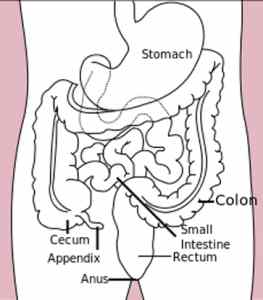

MedFriendly®


Proctectomy
A proctectomy is a surgical procedure in which the
rectum is removed. The rectum is the last part of the
large intestine. The intestine is a tube shaped structure
that is part of the digestive tract. The intestine is
divided into two main sections: the small intestine and
the large intestine. The small intestine takes in all of the
nutrients (healthy substances) that the body needs. The
large intestine absorbs moisture from the matter that is
left after it is digested in the small intestine, and
excretes the waste from the anus (the part of the body
that poop comes out of). Excrete means to release
from the body as waste.
FEATURED BOOK: Intestinal Health: A Practical Guide to Abdominal Comfort
In a proctectomy, the colon is attached to the area where the rectum was located. The
colon is the major part of the large intestine and is connected to the rectum. When the
entire rectum is removed, the person will no longer be able to defecate (poop) naturally.
Instead, an incision will be made into the belly and part of the colon will be brought
through it to form an area where feces can be discharged and released into a lightweight
bag attached to the skin. This procedure is known as a colostomy.
Proctectomy is also known as rectectomy. Proctectomy comes from the Greek word
"proktos" meaning "anus" and the Greek word "ektome" meaning "excision." Put the words
together and you get "anus excision."
"Where Medical Information is Easy to Understand"™















